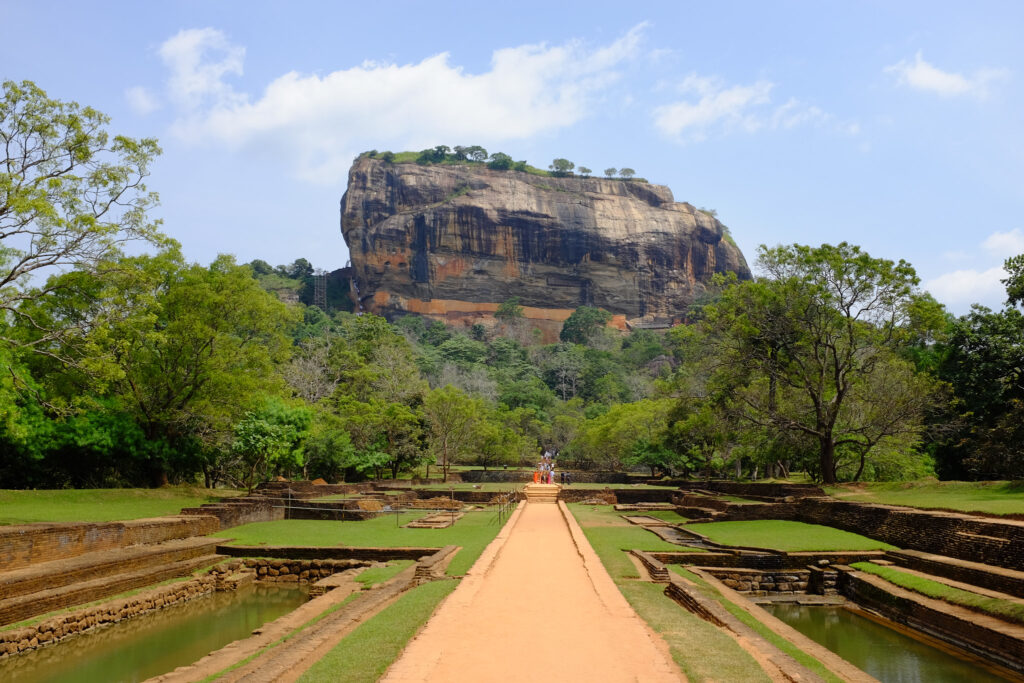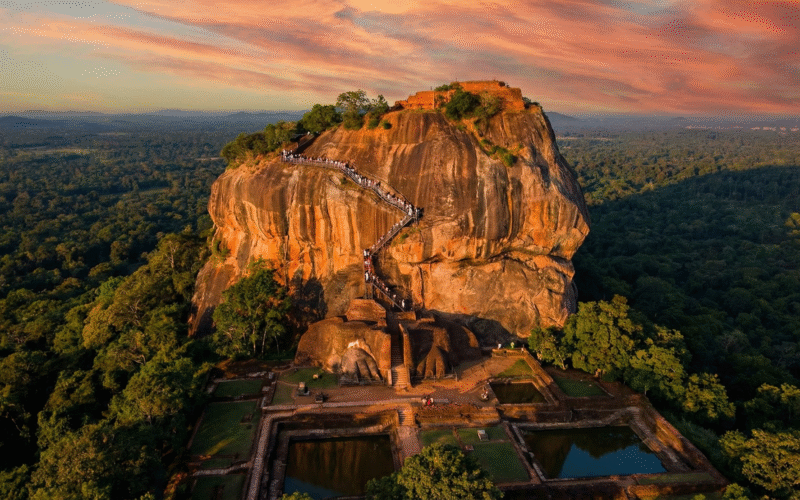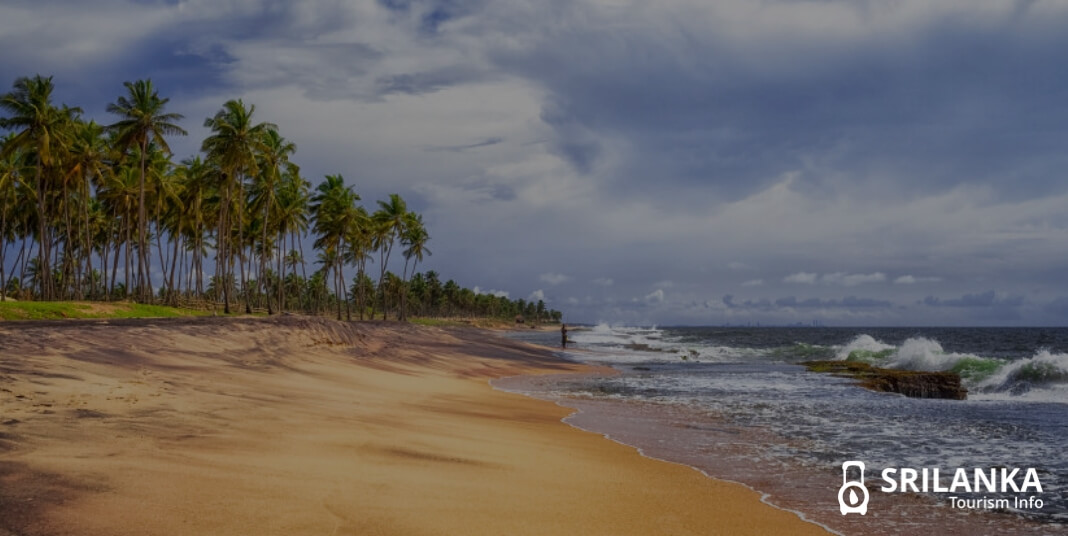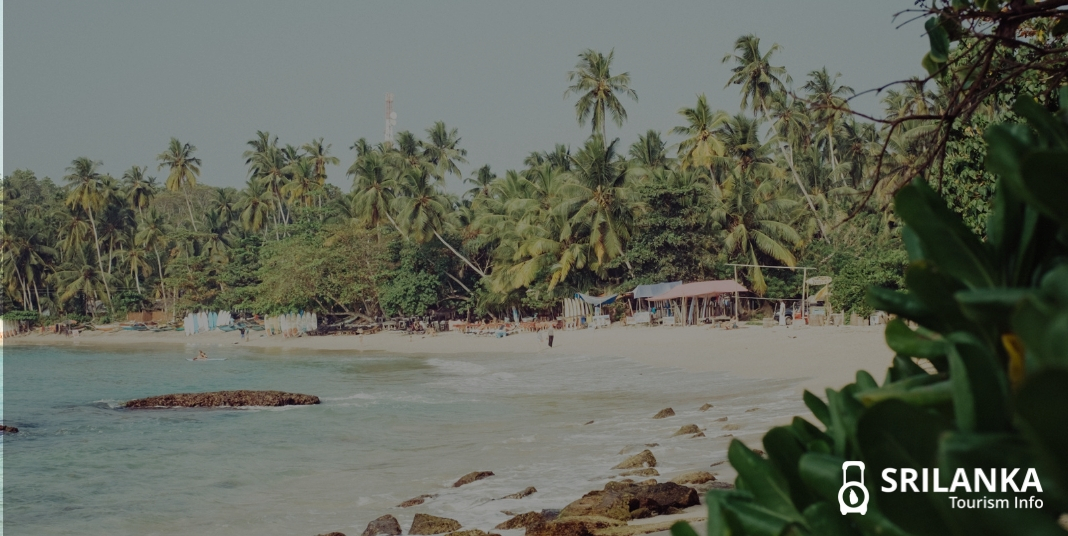Sigiriya rock fortress stands as Sri Lanka’s most popular marquee attraction, drawing approximately 1 million visitors annually. This ancient rock fortress rises impressively over 660 feet high, making it instantly recognizable from afar. Its massive granite column dominates the surrounding landscape. The lion rock sits in the northern Matale District near Dambulla town in the Central Province. This historically and archeologically significant site was once a large forest. King Kashyapa (477–495 CE) chose it as his new capital after he seized the throne, sent his brother to exile, and caused his father’s death.
A visit to Sigiriya promises quite an adventure. The climb has about 1,200 steps and exposed staircases that cling to the cliff’s side. The challenging climb might test your stamina, but Sigiriya deserves its fame and should be part of your Sri Lankan trip.
This UNESCO World Heritage Site now stands as one of the finest examples of ancient urban planning. This piece will help you understand what to expect at the Sigiriya rock fortress. You’ll get a detailed breakdown of the climbing experience and vital tips to make your first visit to this Sri Lankan landmark unforgettable.

What to expect when visiting Sigiriya Rock Fortress
Planning a visit to the majestic Sigiriya Rock Fortress? The site opens daily from 7:00 AM to 5:30 PM, and you can enter until 5:00 PM. Foreign tourists from non-SAARC countries need to pay USD 35.00 for adults and USD 20.00 for kids aged 6-12 years. SAARC country visitors pay USD 20.00 whatever their age, while Sri Lankan locals get substantially lower rates at LKR 120 for adults and LKR 60 for children. Kids under 6 can enter free.
Your ticket lets you explore everything – the magnificent gardens, ancient frescoes, the historic Mirror Wall, and the climb up to the palace ruins at the summit. The Sigiriya Museum comes included with your entrance fee and provides a great way to get insights through artifacts and interactive displays.
The best times to visit are early morning, before 9:00 AM or late afternoon after 3:30 PM. This helps you dodge both the midday heat and big crowds that usually show up between 10 AM and 2 PM. December through April during the dry season works best. March has perfect visibility and weather, though you’ll find more tourists around. Getting there is easy from nearby cities. Dambulla sits just 17 km away – take a local bus for about LKR 100 or grab a tuk-tuk for LKR 750-1000 to make the 30-minute trip. From Colombo, the 175 km journey takes 4-5 hours. You can choose between bus, train to Habarana, private taxi, or treat yourself to a spectacular 30-minute flight.

The climb to the top: step-by-step experience
The climb up Sigiriya takes you through several distinct stages that offer something unique at every turn. You’ll start by walking through symmetrical water gardens, among the oldest landscaped gardens in the world. These gardens showcase impressive pools, fountains and ancient hydraulic systems that still work after 1,500 years.
The path continues through asymmetrical boulder gardens where natural rock formations once held buildings. You can spot rock-cut footings that anchored walls and pillars long ago. Beyond the boulders lie terraced gardens rising in circles around the massive rock. The climb gets steeper from here. After climbing about 1,200 steps in total, you’ll reach the Lion’s Paw Terrace, a perfect spot to catch your breath and drink some water. This area showcases two massive limestone paws unearthed in 1898. These paws are all that remain of a huge lion statue whose mouth was once the gateway to the top.
Metal staircases attached to the rock face mark your final climb. Though challenging, especially in the tropical heat, reaching the 1.6-hectare summit makes it worthwhile. The top reveals palace ruins, an ancient swimming pool, and stunning views across Sri Lankan jungle and far-off mountain peaks. Nearby landmarks like Pidurangala Rock look surprisingly small from up here, creating a view that feels almost prehistoric.

Tips for first-time visitors to Sigiriya, Sri Lanka
Your first visit to the magnificent Sigiriya lion rock will be much better with proper preparation. The best time to arrive is early morning (before 8 AM) or late afternoon to avoid crowds and intense heat. Good grip shoes are a must for your trip—you’ll face steep, uneven staircases that just need proper walking or running shoes.
Smart packing will make your adventure at Sigiriya rock fortress more enjoyable. Each person should carry 1-2 liters of water since you won’t find any vendors once you start climbing the rock. The summit has no shade, so don’t forget your sunscreen, broad-brimmed hat, and sunglasses. Security takes photography rules very seriously in the fresco area and might confiscate cameras without return if you break them. The premises strictly forbid drones as they can disturb hornet nests.
The site’s monkeys are skilled thieves who can grab your food and drinks quickly. You should also stay quiet in areas with wasp warning signs to avoid triggering attacks. Parents should watch their children carefully at the summit where there aren’t many safety barriers. A great way to enhance your experience is to visit nearby Pidurangala Rock, which gives you amazing views of Sigiriya from afar.
Conclusion
Sigiriya Rock Fortress shines as a crown jewel among Sri Lanka’s historical treasures. This ancient marvel has engaged visitors over the centuries with its remarkable engineering, artistic achievements, and breathtaking vistas. Your effort to climb 1,200 steps rewards you with unique panoramic views across the lush Sri Lankan landscape, making every drop of sweat worth it.
The timing of your visit will substantially affect your experience. You’ll find the best balance of comfortable temperatures and smaller crowds during early morning or late afternoon visits. Good preparation makes your trip really enjoyable – wear comfortable shoes, carry enough water, and protect yourself from the sun.
Most reasonably fit travelers can handle the climb when they take it at a measured pace. The magnificent Lion’s Paw Terrace serves as one of many rest stops where you can catch your breath and admire the ancient craftsmanship. Well-preserved water gardens, boulder formations, and frescoes tell the compelling story of King Kashyapa’s vision and the incredible achievements of 5th-century Sri Lankan civilization.
Sigiriya’s value extends beyond its physical challenge as it reveals ancient urban planning secrets. This UNESCO World Heritage Site showcases sophisticated engineering solutions that were way ahead of their time. The ancient hydraulic systems still work after 1,500 years – without doubt evidence of their creators’ ingenuity.
Sri Lanka offers many attractions, but few match Lion Rock’s awe-inspiring experience. Your trip from water gardens to summit takes you through distinct zones, each with unique features worth savoring. Take your time – at least 2-3 hours – to fully appreciate this extraordinary site instead of rushing through it.
This ancient citadel means more than just another tourist spot. It embodies Sri Lanka’s cultural heart and helps you learn about the country’s rich heritage. Your visit creates more than just photos and memories – it builds a genuine connection to one of humanity’s most remarkable architectural and cultural achievements. Lion Rock’s experience will definitely become a highlight of your Sri Lankan adventure.
Key Takeaways
Planning your first visit to Sigiriya Rock Fortress requires strategic timing and preparation to maximize this UNESCO World Heritage Site experience.
- Visit early morning (before 8 AM) or late afternoon (after 3:30 PM) to avoid crowds and intense heat while climbing the 1,200 steps to the summit.
- Pack essentials: comfortable grip shoes, 1-2 liters water per person, sunscreen, and hat since there are no vendors during the ascent and limited shade at the top.
- Budget USD 35 for foreign adults (USD 20 for children 6-12) with tickets including access to water gardens, frescoes, Mirror Wall, and palace ruins at the summit.
- Respect photography restrictions in fresco areas and maintain distance from monkeys to avoid confiscation of equipment and potential wildlife encounters.
- Allow 2-3 hours minimum for the complete experience from the ancient water gardens through boulder formations to the breathtaking panoramic views at Lion Rock’s summit.
The challenging climb rewards visitors with unparalleled insights into 5th-century Sri Lankan civilization and engineering marvels that continue functioning after 1,500 years, making Sigiriya an unmissable highlight of any Sri Lankan journey.
FAQs
Q1. How long does it take to climb Sigiriya Rock Fortress? The climb typically takes about 2-3 hours for a complete experience, including time to explore the water gardens, frescoes, and the summit. The actual ascent can be done in about 30-45 minutes, depending on your fitness level and the crowds.
Q2. What is the best time to visit Sigiriya? The best time to visit is either early morning (before 8 AM) or late afternoon (after 3:30 PM) to avoid the midday heat and crowds. The ideal months are December through April during the dry season, with March offering optimal weather conditions.
Q3. How much does it cost to enter Sigiriya Rock Fortress? For foreign adults, the entrance fee is USD 35, while children aged 6-12 pay USD 20. SAARC country visitors pay USD 20 regardless of age. The ticket includes access to the entire complex, including the gardens, frescoes, and palace ruins.
Q4. What should I wear and bring for climbing Sigiriya? Wear comfortable shoes with good grip for the steep climb. Bring at least 1-2 liters of water per person, sunscreen, a broad-brimmed hat, and sunglasses. Comfortable, breathable clothing is recommended due to the tropical climate.
Q5. Are there any restrictions for photography at Sigiriya? Photography is strictly prohibited in the fresco area, and cameras may be confiscated if this rule is violated. Drones are completely forbidden within the premises. However, you can take photos in other areas of the complex, including at the summit.







